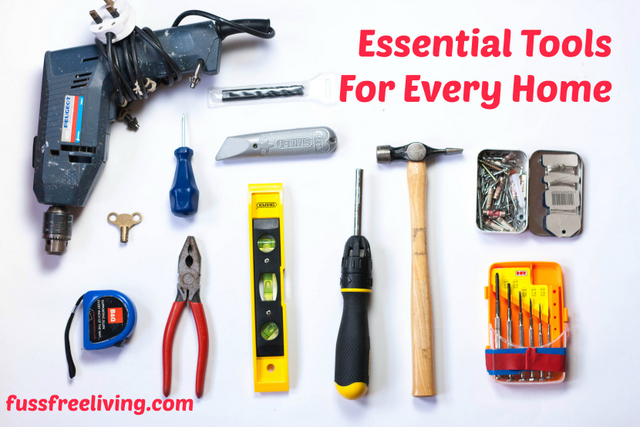A guest post by Ed
I was lucky to grow up in a household where DIY is the norm, and a well equipped workshop is assumed. It wasn’t always tidy, but most things were in there and could be found with a bit of searching; despite this early advantage, sadly I am no great craftsman, but I am happy doing the basics, and my basic toolkit was acquired piecemeal. However, for others, part of the great journey of life is the trip to the DIY superstore to buy the essential tools, for when they are first responsible for a home of their own.
Anything relating to gas must be left to the professionals, and likewise, anything attached to the building in terms of electrical wiring or plumbing warrants a phone call. However, it’s within pretty much everybody’s capability to change fuses and rewire plugs when required (much less common now that everything comes with a plug moulded on), bleed radiators and hang pictures. So this is my list of the essentials.
- Hammer – mainly for hanging pictures. You don’t need a great big heavy thing designed to drive 6″ nails, a smaller metalworking hammer will be fine.
- Tape measure is also essential for picture hanging,
- Spirit level can be useful, while those with iPhones running iOS7 can use the spirit level function incorporated in the compass, the extra length of the level is useful when marking up. There is no need, however, to go the full metre long length.
- Bradawl – a small flat-headed spike designed for marking screw holes in wood – is very handy to mark holes in plaster and plasterboard, and helps avoiding the drill slipping when starting off. I am aware that this is not its intended function, but it’s something that I do find helpful.
- Electric drill and drill bits – I’m happier hanging really large and heavier pictures from a screw and rawlplug than a picture hook, even the larger, two nail picture hooks. Drills with rechargeable batteries are very handy, but not essential for the occasional job, and a corded drill is a lot cheaper, not to say more powerful should you need to drill a hole into brick. For drill bits, there are many complete sets available that include a range of the commonly used sizes in the three most useful types: HSS, wood and masonry.
- Radiator key – As mentioned, I leave nearly all the plumbing, and definitely all the gas work to the professionals, but I do make sure that the radiators are bled and the central heating system is kept pressurized. To bleed radiators, you need a key – there is only the one size – and it makes the job the work of a moment.
- Screwdrivers. For wiring plugs when we have routed wiring behind built-in shelving, for example, and for changing plug fuses, I have a set of miniature screwdrivers (which also come in useful for tightening spectacles and those battery compartments on children’s toys), and a universal screwdriver that takes different head depending on the type of screw in use: flat head, Pozidriv, Phillips etc.
- Pliers. A pair of pliers cuts wire cleanly, even up to gauges used for 13A (such as heaters)
- Stanley knife. stripping away the insulation can be done with careful use of a Stanley knife.
- Selection of screws, nails, tack and picture hooks.
- A selection of fuses and fuse wire (depending on your fuse box)
A small box to fit them all in, and you should find that you’re covered for most jobs. The only other thing that might join the list is a small paintbrush for touching up chips in skirting boards, doors and frames.
What are your tool box essentials?

We’ve got to the point of having a full kit for everything we need in the house, but this is a great guide for someone starting out.